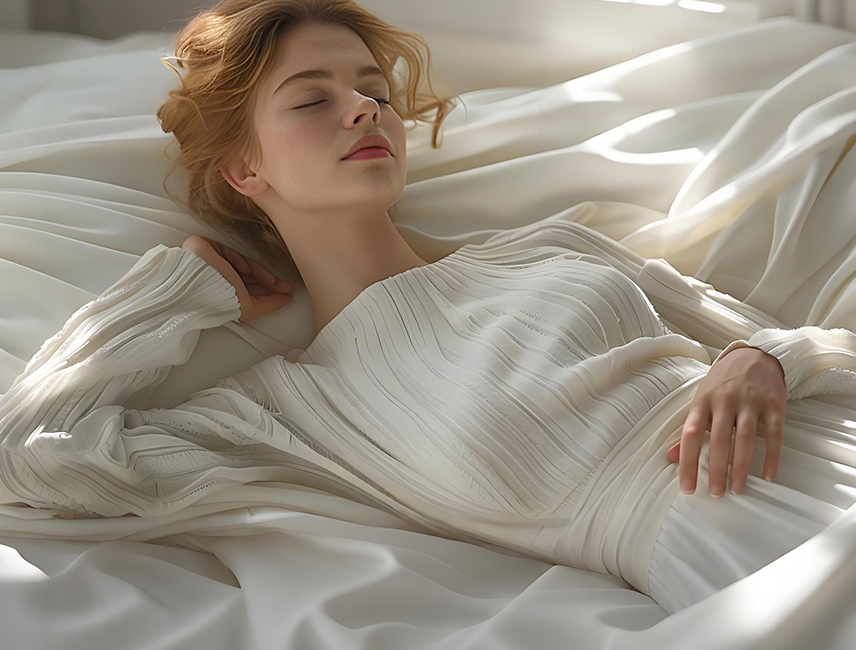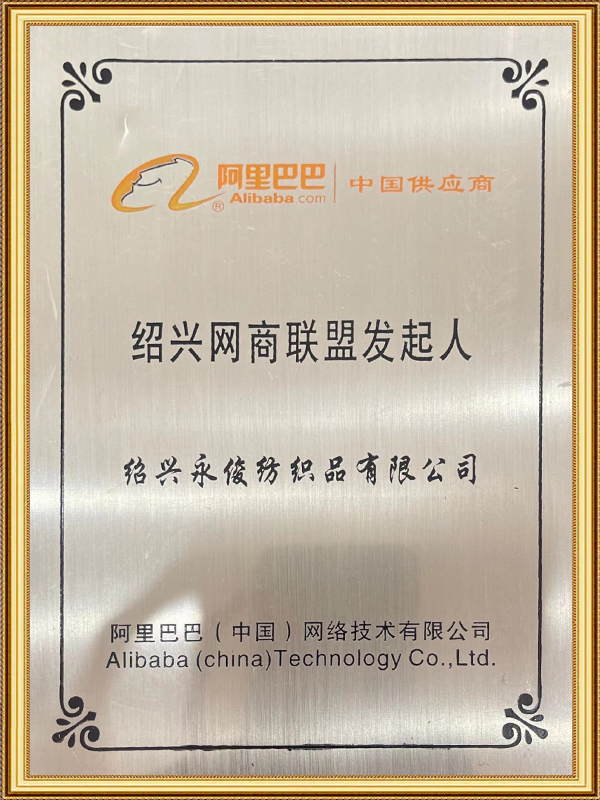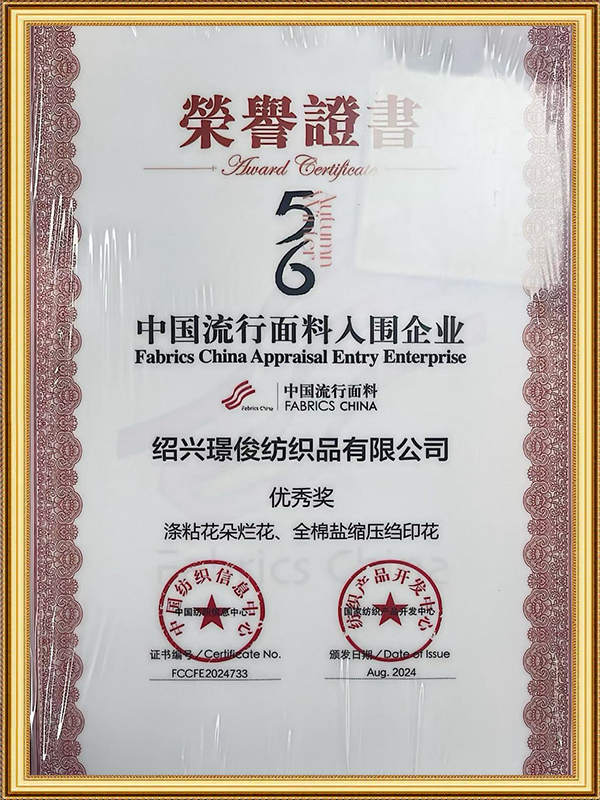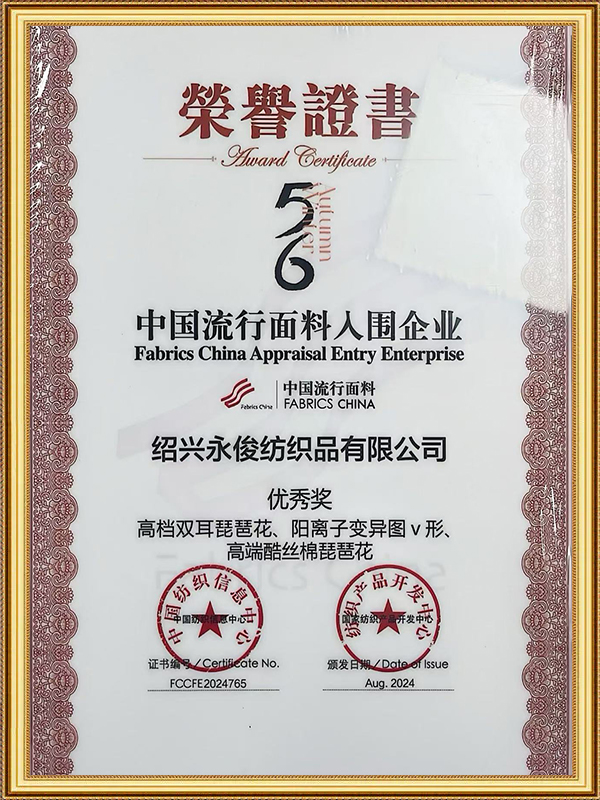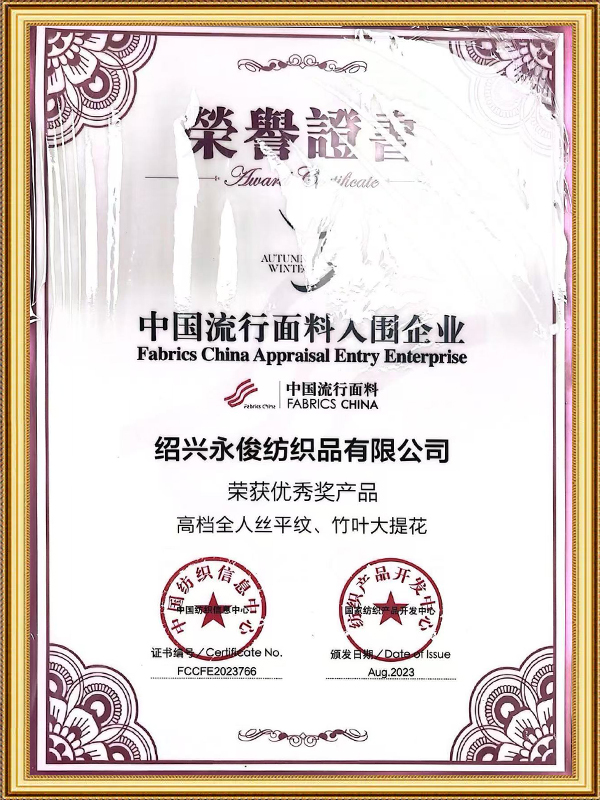What are the overall structural characteristics of TR & NR blended fabrics?
Introduction to TR & NR Blended Fabrics
TR and NR blended fabrics represent textile materials produced by combining fibers such as polyester with rayon (TR) or nylon with rayon (NR). These blends aim to balance the mechanical strength of synthetic fibers with the drape and soft feel of cellulosic fibers. TR fabrics generally consist of polyester and rayon, while NR fabrics combine nylon and rayon. Although the composition differs, both categories share structural features related to fiber distribution, yarn formation, and fabric construction. Yongjun Textile, with its extensive experience in woven and knitted linings, provides valuable insight into how blended structures behave because the company engages in yarn-dyeing, composite bonding, embossing, and other finishing techniques that directly influence structural performance. Understanding these structures helps manufacturers tailor fabrics for garments, linings, and lightweight functional textiles.
Fiber-Level Structural Characteristics
The structure at the fiber level determines how TR and NR blends behave when formed into yarns and fabrics. Polyester and nylon fibers offer relatively uniform diameters, smooth surfaces, and high tensile strength, giving the blend a stable mechanical foundation. Rayon, being a regenerated cellulose fiber, has a more irregular cross-section and higher moisture absorption. When rayon is introduced into the blend, it alters the spacing among the synthetic fibers, allowing greater moisture movement through the yarn. This combination creates yarns that have a balanced density and moderate softness. NR blends exhibit slightly higher elastic recovery because nylon has greater resilience than polyester. Meanwhile, TR blends tend to maintain shape stability and resist deformation because polyester is stiffer and less moisture-responsive than nylon. These fiber-level interactions establish the primary structural behaviour of the final fabric.
Yarn Construction in TR and NR Blends
The way fibers twist together during yarn formation influences evenness, hairiness, and density. In TR yarns, polyester fibers typically occupy the outer regions of the yarn because of their smoothness and rigidity, while rayon fills internal spaces. The result is a yarn with relatively uniform tension distribution. In NR yarns, nylon’s flexibility allows it to interlock more actively with rayon, producing yarns that may show slightly higher elongation under tension. The twist level also affects how compact the yarn becomes. Higher twist yields greater durability, while lower twist improves softness and drape. Manufacturers like Yongjun Textile adjust twist levels depending on whether the fabric will be used as a lining, fashion fabric, or composite material. Yarn construction also affects how dyes penetrate the fiber surfaces, influencing visual uniformity across the fabric width.
| Attribute |
TR Yarn (Polyester/Rayon) |
NR Yarn (Nylon/Rayon) |
Impact on Fabric Structure |
| Fiber Distribution |
Polyester mainly outer, rayon inner |
Nylon interlocks evenly with rayon |
Influences surface smoothness and loop cohesion |
| Twist Level |
Moderate to high twist |
Moderate twist |
Affects yarn compactness, elasticity, and drape |
| Hairiness |
Low to moderate |
Low to moderate |
Influences hand-feel and pilling potential |
| Elastic Recovery |
Moderate |
Higher due to nylon elasticity |
NR fabrics show greater resilience and stretch |
| Dye Penetration |
Requires controlled temperature and carrier |
Easier dye uptake at lower temperature |
Uniform color distribution depends on process |
Structural Characteristics in Woven Forms
When TR and NR yarns are woven into fabrics, the arrangement of warp and weft threads determines the fabric’s overall stability. Plain weaves made from TR blends usually exhibit firm texture and resistance to displacement because polyester helps hold the structure. NR blends woven in twill or satin structures demonstrate smoother surfaces with slightly more flexibility due to nylon’s physical properties. The thread density also affects transparency and weight; higher densities result in more compact fabrics, while lower densities lead to breathable materials. The dimensional stability of TR woven fabrics is generally higher because polyester resists shrinkage. NR woven fabrics, however, provide more surface softness and may show better recovery after folding. These woven structures define how the fabrics respond to bending, stretching, and long-term wear.
Structural Characteristics in Knitted Forms
Knitted TR and NR blends present different structural features because knitting forms loops rather than interlaced threads. TR knit fabrics often display good structural stability because polyester reduces the extent to which loops deform during wear. Conversely, NR knit fabrics typically show enhanced elasticity due to nylon’s resilience. The presence of rayon introduces moisture-related flexibility, which contributes to a smoother drape. In single-jersey structures, TR blends maintain cleaner loop definition, while NR blends feel softer. In double-knit structures, both blends achieve higher thickness and improved resistance to distortion. Knitted versions of these fabrics are commonly used in lightweight fashion garments and soft lining applications, and companies like Yongjun Textile adjust knitting parameters to achieve consistent loop formation and balanced fabric weight.
Density Distribution and Thickness Characteristics
The overall density of TR and NR blended fabrics is influenced by fiber arrangement, yarn thickness, and fabric structure. TR blends generally achieve more uniform density because polyester maintains stable shape under pressure. NR blends demonstrate moderate variability due to nylon’s flexibility, allowing slight compression in high-stress areas. Thickness variation is also affected by finishing treatments such as calendaring, coating, or glazing—techniques frequently used by Yongjun Textile to refine surface quality. In fabrics with higher rayon content, density may fluctuate more because the fibers respond to moisture differently, influencing the compactness of yarn bundles. These density characteristics impact the hand feel, opacity, and air permeability of the fabric, making density assessment crucial for high-precision textile applications.
Surface Texture and Hand-Feel Related Structure
The interaction among polyester, nylon, and rayon fibers contributes to distinctive surface textures. TR blends typically have a smoother and more stable surface because polyester reduces surface irregularities. NR blends often feel softer and more pliable due to nylon’s flexibility. Rayon adds a subtle matte appearance and contributes to moisture regulation on the fabric surface. Structural factors such as the twist level and finishing process further modify the tactile qualities. When embossing or printing is applied—techniques used extensively by Yongjun Textile—the surface structure becomes more visually layered, enhancing the fabric’s decorative potential without significantly altering its core mechanical structure. The combination of synthetic and cellulosic fibers creates a balanced tactile experience appropriate for various apparel categories.
Dimensional Stability Characteristics
Dimensional stability in TR and NR blends refers to the fabric’s ability to maintain shape after washing, stretching, or long-term wear. TR blends generally show consistent dimensional behavior because polyester has low moisture regain and does not shrink easily. NR blends have slightly different stability, as nylon absorbs more moisture than polyester and may exhibit small changes when exposed to varying temperatures or humidity levels. Rayon’s presence introduces further complexity, as the fiber swells when wet. As a result, both TR and NR fabrics may require controlled finishing processes such as heat setting to improve stability. Manufacturers with advanced processing capabilities, such as Yongjun Textile, adjust machine temperatures and tension settings to ensure fabrics remain uniform from batch to batch.
Mechanical Strength and Structural Durability
The mechanical strength of TR and NR blended fabrics is largely determined by the synthetic fiber content. Polyester in TR blends provides abrasion resistance and tensile strength, while nylon in NR blends contributes elasticity and resistance to deformation. Rayon, although less strong than synthetic fibers, improves drape and comfort. The resulting fabrics exhibit balanced structural properties that support both durability and wearability. The blending ratio, fabric density, and finishing process all contribute to long-term performance. For example, coated or composite versions of these fabrics demonstrate better resistance to friction because the coating reinforces the surface structure. This makes TR and NR blends suitable for linings, jackets, and formalwear where smooth movement and structural reliability are required.
| Property |
TR Blended Fabric (Polyester/Rayon) |
NR Blended Fabric (Nylon/Rayon) |
Functional Implication |
| Tensile Strength |
High due to polyester |
Moderate to high |
TR fabrics resist elongation; NR fabrics have moderate stretch |
| Abrasion Resistance |
Good |
Moderate to good |
TR fabrics suitable for high friction areas |
| Elastic Recovery |
Moderate |
High |
NR fabrics return to shape faster after stretching |
| Flexibility |
Moderate |
Higher |
NR fabrics drape more softly |
| Crease Recovery |
Good |
Moderate |
TR fabrics maintain structural neatness longer |
Moisture Management and Breathability Structure
Rayon plays a significant role in the moisture behavior of TR and NR blends because it has a higher absorption capacity than polyester or nylon. The fiber swells when exposed to humidity, influencing how tightly yarns pack together. In TR fabrics, moisture transmission is generally moderate because polyester limits overall absorption. In NR fabrics, nylon’s moderate moisture sensitivity contributes to a slightly different balance, allowing quicker adaptation to environmental changes. Breathability also depends on the yarn structure and fabric density. Lower density fabrics allow greater air passage, while densely woven fabrics emphasize coverage. The structural interaction of fibers ensures these blends remain comfortable in garments that require airflow, such as suits, dresses, and linings.
Dyeing and Color Uniformity Characteristics
The dyeing behavior of TR and NR blended fabrics is influenced by the distinct chemical properties of each fiber. Polyester, nylon, and rayon each interact with dyes differently, requiring controlled processes to achieve uniform coloration. TR fabrics, containing polyester, often need high-temperature dyeing or carrier-assisted processes. NR blends, with nylon, accept dyes more readily at lower temperatures. Rayon absorbs dye quickly, which may lead to variations if not carefully regulated. Manufacturers like Yongjun Textile use advanced yarn-dyeing techniques to enhance overall uniformity by ensuring color penetration occurs before fabric formation. The structural composition of the yarns affects how light interacts with the dyed surface, influencing visual depth and consistency across the fabric width.
Finishing Processes and Resulting Structural Changes
Finishing treatments significantly shape the final structural expression of TR and NR blended fabrics. Processes such as coating, hot stamping, calendaring, and composite bonding modify the surface and internal density. For example, coating adds a thin protective layer, altering feel and improving stability. Calendaring compresses the fabric to achieve a smoother appearance, while embossing introduces textured patterns without altering overall thickness. These treatments help manufacturers adapt the fabrics to various product categories including linings, fashion textiles, and decorative materials. Yongjun Textile’s expertise in multiple finishing technologies enables consistent structural refinement and reliable performance across different production batches.
Applications Based on Structural Characteristics
The structural attributes of TR and NR fabrics determine their suitability for different applications. TR fabrics, with their stable structure and balanced density, are commonly used in garments requiring clean lines and consistent drape. NR fabrics, known for their flexibility and soft surface texture, are well suited for clothing that benefits from gentle stretch and smooth contact with the skin. Both blends serve widely in linings, jackets, trousers, formalwear, and fashion accessories. When processed with techniques such as printing, glazing, or composite bonding—capabilities associated with Yongjun Textile—the fabrics can be adapted for decorative uses in apparel or lightweight interior textiles.

 English
English 中文简体
中文简体
